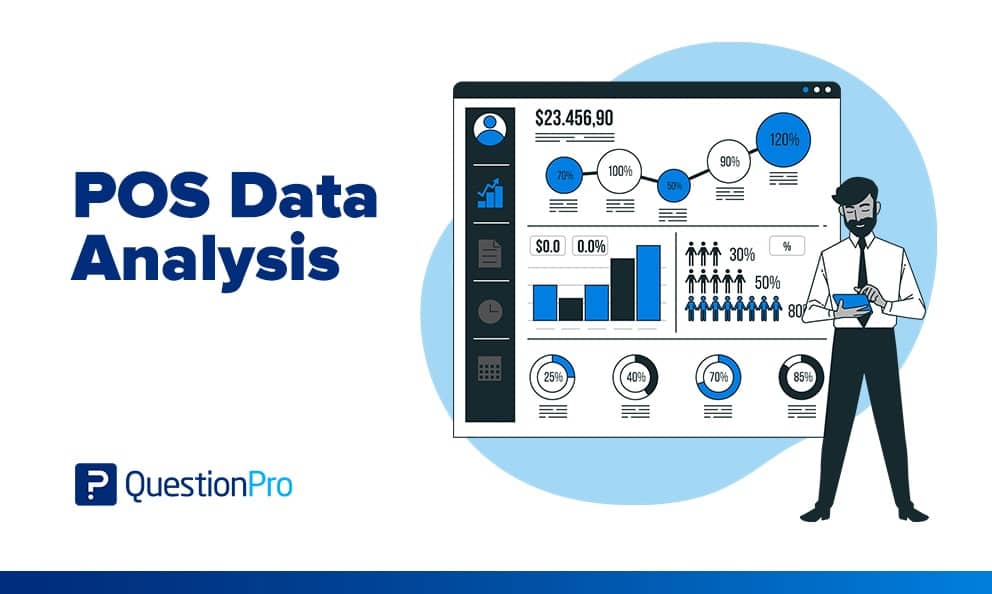 Reading Time: 3 minutes read
Reading Time: 3 minutes readThe POS data analysis is the information that is collected automatically, during the customer’s payment. This data can be the status of the inventory, the type of business management, or consumer information such as who they are, why they are buying, consumption habits and preferences, etc.
POS data analysis enables retailers and manufacturers to perform in-depth analysis of each point of sale, which is essential to obtain data on consumer behavior and buying trends.
What is a POS data analysis for?
POS data analysis is a goldmine for retail stores, allowing them to clearly understand consumer behavior and the impact of sales at each point of sale. Data analytics and data analysis are closely related processes that involve extracting insights from data to make informed decisions.
However, although most of them capture and store a large amount of business-relevant data, they don’t know what to do about it. That is why we have for you some of the main uses of a POS data analysis:
Uses of a POS data analysis
1. Identify low-demand products
Among the main problems that consumers face are high prices, quality and lack of variety in the products that a retail store offers.
By performing a POS Data Analysis it is possible to identify the way in which customers respond to product prices and the strategies that retailers can apply to manage inventory, and thus know the availability in stores, trends, consumption in the different periods.
This type of analysis allows managers to order more of a product that generates more sales and more profit for their business.
2. Buy the right amount of products
Retail businesses make the mistake of choosing the average number of products sold as a parameter to increase or decrease their storage. However, they do not take into account seasons such as weekends, holidays, etc.
By knowing this information, retailers perform a proper inventory count and earn more profit with the correct quantity of products.
3. Store the right products
Out-of-stock products are known to slow down the sales of a retail business, so POS data analyzes reveal a trend that indicates which ones are in greatest demand, and in what periods.
LEARN ABOUT: Test Market Demand
This allows you to prioritize the products that are stored in the stores, manage them in different categories and have enough stock when the time comes to take it to the shelves.
4. Identify sales trends
The information collected during the data analysis accurately indicates the sales and profits of each point of sale. This will help you to compare the results and to optimize the productivity of each store and increase the profitability between them.
Comparable data is easy to obtain in a POS data analysis. With this information you can know in detail each product, category and organization of shelves in the points of sale.
5. Best business strategies
It allows us to know what is happening in the points of sale and the habits of the consumers, to make better decisions and improve the commercialization of the products.
With this, it is possible to accurately measure the effectiveness of the commercial promotions executed, identify the ROI of the promotion and what is the increase in sales for each of them, so you can better plan future promotions and optimize your strategies with prices based on data.
6. Know consumer habits
It helps you collect deep information about consumers, analyze which products they consume the most and what other products they use to complement them.
This allows you to properly plan promotions, according to the type of customer and organize products in retail stores according to consumption.
Importance of performing a POS data analysis
POS data analysis allows you to collect constant information in large quantities, allowing you to track and forecast share counts, optimize marketing campaigns and obtain detailed information on the ideal customer.
LEARN ABOUT: Market Evaluation
Currently, it’s much more popular. It is not only about knowing the market that your brand covers, but it also allows you to identify other extremely important factors such as product availability, inventory and sales status, ROI, etc., which will benefit the sales areas of greater opportunity, the increase in the demand of the product and the processes identified when satisfying the needs of the consumer.
Traditional data analysis gives you general information. However, POS data analysis offers actionable data that allows you to be more effective in your promotions, forecast sales and execute profitable marketing campaigns.
Learn more on how to do a POS sale analysis easily using a data collection tool.







